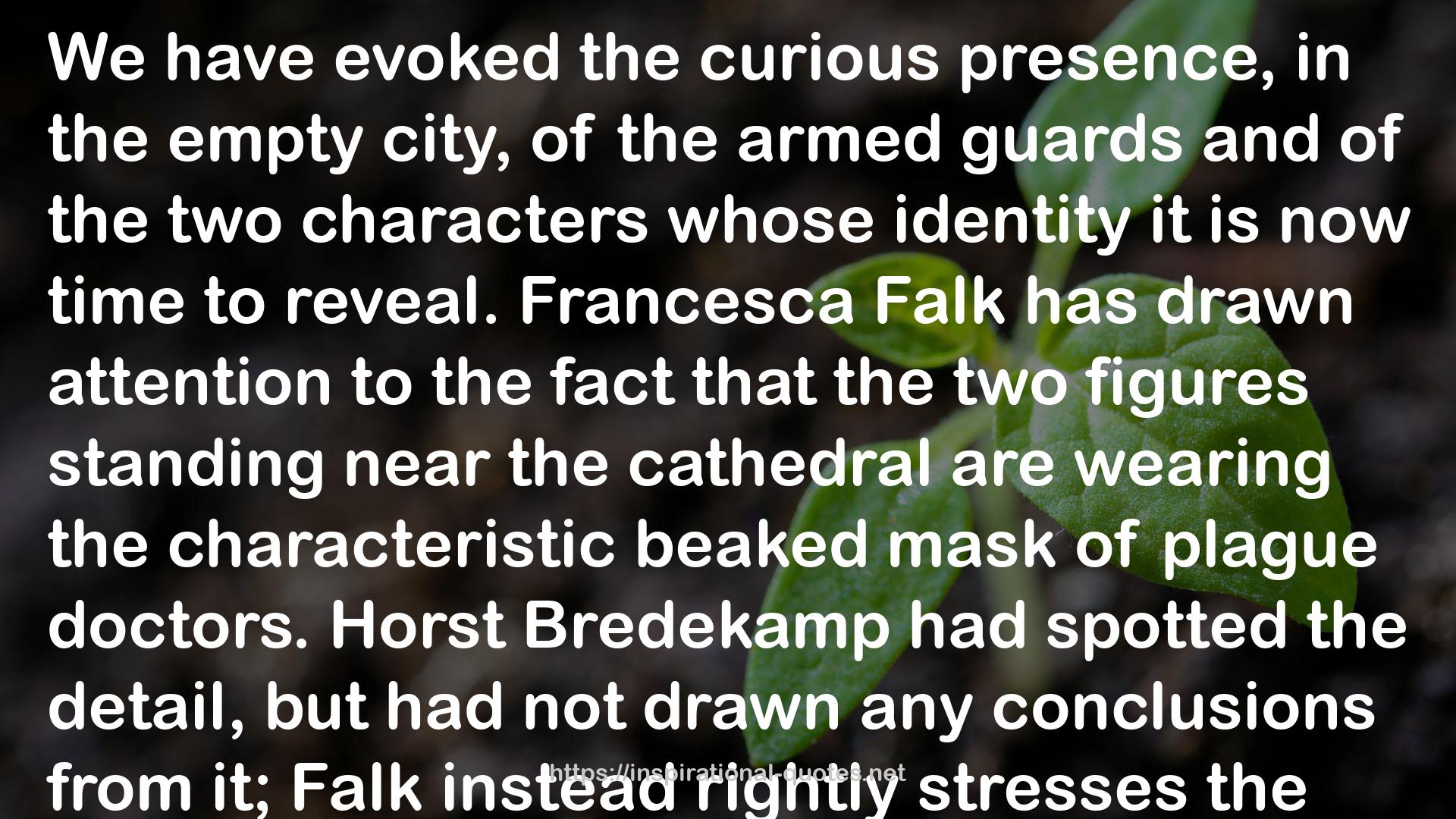" We have evoked the curious presence, in the empty city, of the armed guards and of the two characters whose identity it is now time to reveal. Francesca Falk has drawn attention to the fact that the two figures standing near the cathedral are wearing the characteristic beaked mask of plague doctors. Horst Bredekamp had spotted the detail, but had not drawn any conclusions from it; Falk instead rightly stresses the political (or biopolitical) significance that the doctors acquired during an epidemic. Their presence in the emblem recalls 'the selection and the exclusion, and the connection between epidemic, health, and sovereignity'. Like the mass of plague victims, the unrepresentable multitude can be represented only through the guards who monitor its obedience and the doctors who treat it. It dwells in the city, but only as the object of the duties and concerns of those who exercise the sovereignity.
This is what Hobbes clearly affirms in chapter 13 of De Cive, when, after having recalled that 'all the duties of those who rule are comprised in this single maxim,"the safety of the people is the supreme law"', he felt the need to specify that 'by people we do not understand here a civil person, nor the city itself that governs, but the multitude of citizens who are governed', and that by 'safety' we should understand not only 'the simple preservation of life, but (to the extent that is possible) that of a happy life'. While perfectly illustrating the paradoxical status of the Hobbesian multitude, the emblem of the frontispiece is also a courier that announces the biopolitical turn that sovereign power was preparing to make. "
― Giorgio Agamben , The Omnibus Homo Sacer
